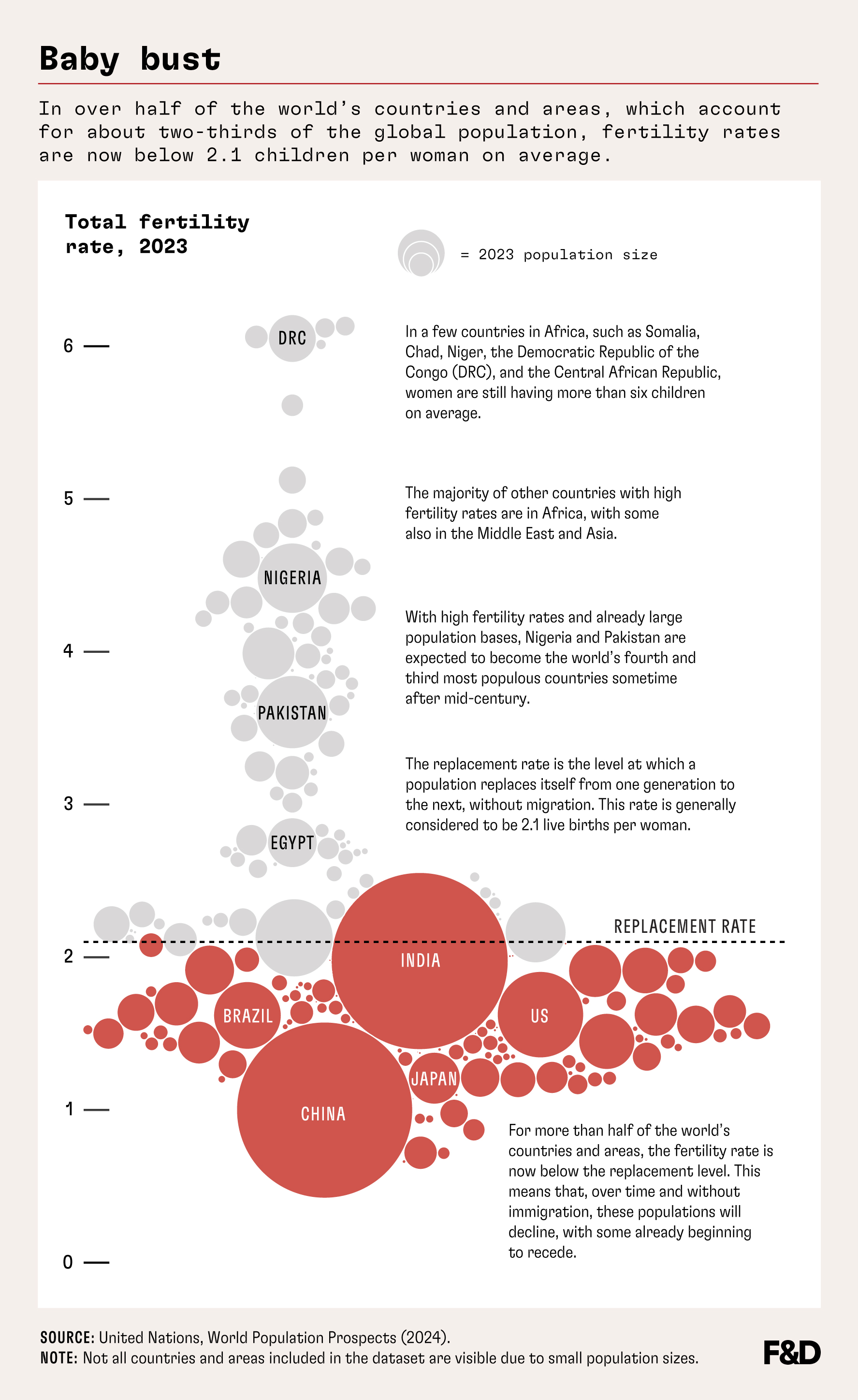Falling fertility and aging populations pose significant challenges for many economies
Significant demographic shifts are underway in much of the world. Over half of the world’s economies, accounting for two-thirds of the global population, now have fertility rates below the replacement fertility level of 2.1 children per woman. Without action, these populations will age and decline over time.
Countries such as Italy, Japan, and Germany are already experiencing the effects of this demographic transition. Lower birth rates result in a smaller working-age population, which in turn affects economic productivity and increases the burden on social support systems. The ratio of retirees to workers is rising, leading to higher costs for pensions and health care, and putting pressure on public finances.
Several countries with declining demographics are experimenting with innovative policy responses. For example, Nordic countries offer generous parental leave and subsidized childcare to encourage higher birth rates. Similarly, Singapore provides financial incentives for families to have more children. In addition, investing in technology and automation, as seen in countries such as Japan, can help enhance productivity despite a shrinking workforce.
In contrast, areas such as sub-Saharan Africa have high fertility rates, which presents its own set of challenges, including the need to invest in education and healthcare and create jobs to support a young and growing population. However, countries in these regions can also leverage their youthful demographics to support economic growth.

Opinions expressed in articles and other materials are those of the authors; they do not necessarily reflect IMF policy.









